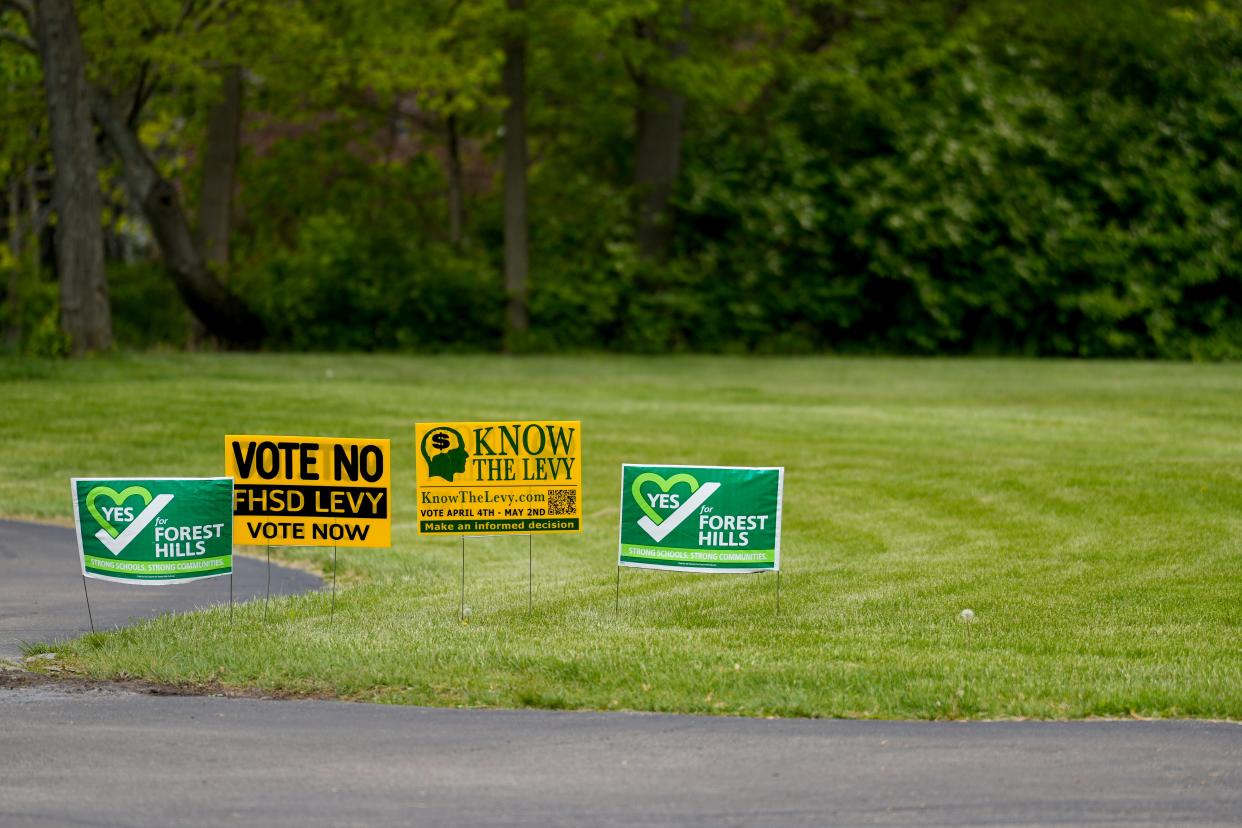Getting rid of 20 mill floor for school districts would help with property taxes | Opinion

A Feb. 22 guest column, "Tired of school levies on tax bill," only told half the story of school property taxes. It is true that House Bill 920 as passed in 1976, almost 50 years ago, was intended to protect taxpayers from excessive tax increases based on widely fluctuating real estate values. It was made law because a rapidly increasing real estate market − and therefore rapidly increasing property taxes − were far outrunning the rate of inflation.
To prevent school districts and taxing entities from receiving windfalls during periods of fast-rising values, most all voted millage was supposed to be "rolled back" so that revenues, and therefore property taxes, did not increase during periods of greatly appreciating real estate value. So why are some taxing districts seeing much higher tax bills?
The culprit is the "20 mill floor" for some school’s General Funds. Rather than "stay flat even when property valuations go up" as the Feb. 22 column stated, those districts receive unvoted tax increases with almost every reappraisal and their residents get higher tax bills.
Those "20 mill floor" school district revenues do not "remain flat for the entire term of a levy." They receive substantial increases in tax dollars after virtually every reappraisal. Rather than passing new local levies they get new, unvoted tax revenue. As school levies usually range from 50% to 60% of a property tax bill, the tax increases in these districts can be big.
For example, in 2006, two local school districts at the 20 mill floor saw big revenue increases following the reappraisal. The Southwest School District received an windfall of over $1 million while the Indian Hill School District received an extra $6.5 million on top of the $20 million they were receiving. These increases were not a one-time event but became a continuing part of the district’s annual property tax.
School boards can create an end run around House Bill 920 taxpayer protections by converting a portion of their "inside millage" (the first ten mills) from current expense into a permanent improvement fund in their budgets. Many have reduced their total operating millage down to the "20 mill floor." Once that happens, the school board gets an automatic tax increase every three years after the county-wide reappraisal, as market values increase.
There are seven Hamilton County school districts currently at the 20 mill floor. The first number is what they would get if HB 920 applied after the latest reappraisal. The second number is their actual millage: Cincinnati CSD, 16.265225 (millage should be), 20.000024 (millage raised to); Indian Hill EVSD, 19.909779 and 20.000020; Northwest LSD, 17.161525 and 20.000016; Norwood CSD, 15.189158 and 20.000024; Oak Hills LSD, 15.524281 and 20.000014; St. Bernard-Elmwood Place, 16.022214 and 20.000009; and Southwest LSD, 16.343393 and 20.000027.
The Joint Vocational School Districts have a 2 mill guarantee. Great Oaks JVSD is in all districts except Cincinnati CSD and Northwest LSD. Their millage raised from 1.570916 to 2. Butler County JVSD is in the Northwest Local School District. Their millage went from 1.395457 to 1.93.
There have been several suggestions to address the problem of exploding property tax bills. One answer is to remove the "20 mill floor" budgeting gimmick and require the revenue rollback provisions of House Bill 920 apply equally to all voted tax levies above the inside millage.
In 2014, former Ohio Gov. John Kasich eliminated the state-funded reduction of 12.5% on new tax levies. This support was promised when the state income tax began in the 1970s and increased in the 1980s. Governor Kasich also reestablished the income limitations on the Homestead Exemption. Both actions can be reversed.
These solutions by the Ohio Legislature could provide immediate help to residents dealing with unusually high property tax bills.
Dusty Rhodes is the former Hamilton County auditor, serving from 1991-2023.

This article originally appeared on Cincinnati Enquirer: Getting rid of 20 mill floor for schools would reduce property taxes

